11 Essential Commands Every Dog Should Know
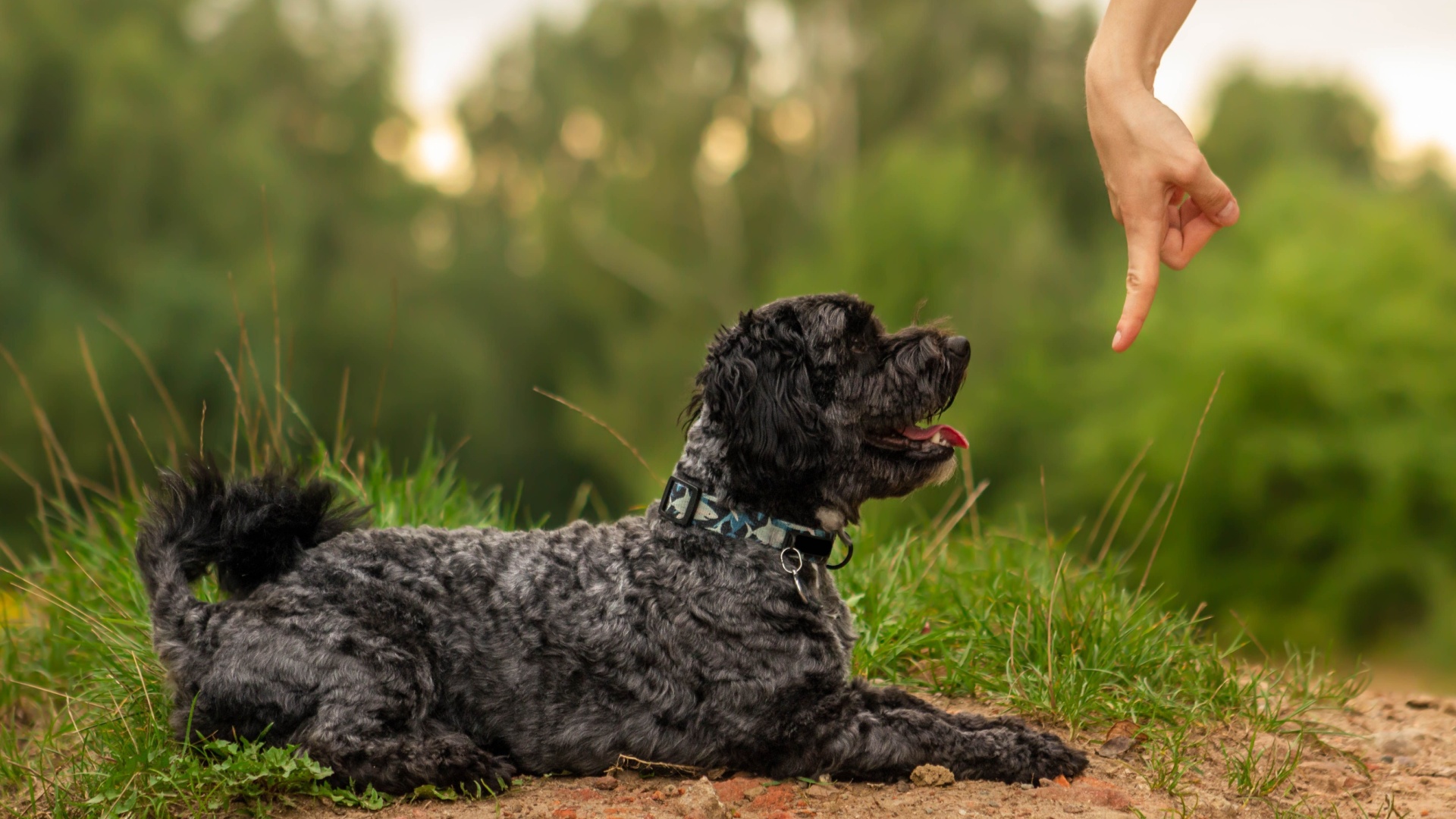
Training your dog with essential commands can transform your furry friend into a well-behaved companion.
These commands are not just about obedience; they also enhance the bond between you and your dog, ensuring safety and a harmonious relationship.
Here are some crucial commands every dog should master.
1. Sit
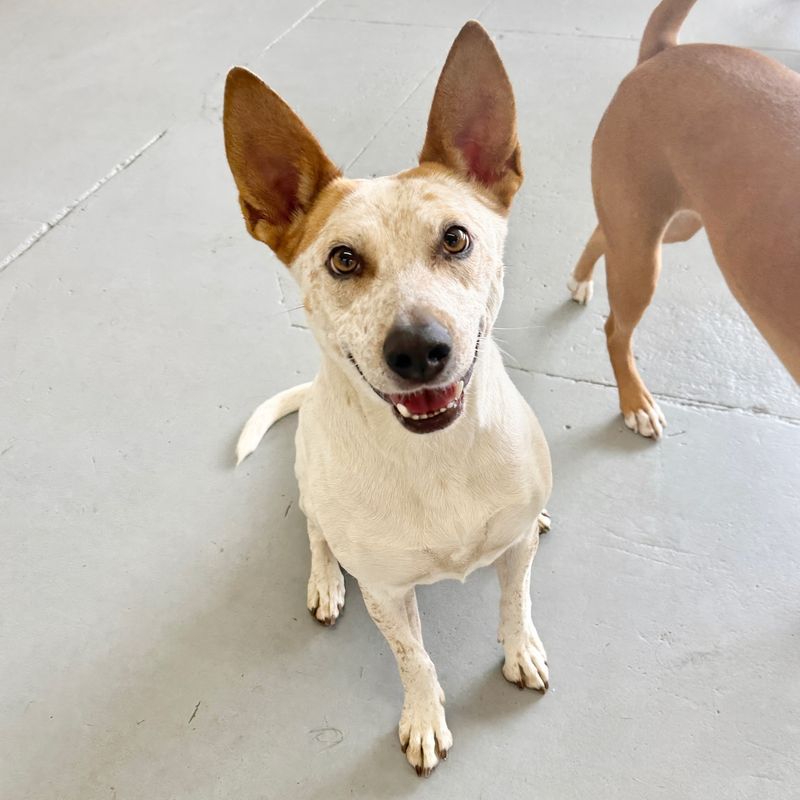
The command “Sit” is often the first trick in a dog’s repertoire, and for a good reason! It’s a fundamental skill that paves the way for more advanced obedience training. Imagine having guests over, and instead of jumping for joy (literally), your pooch sits patiently, wagging its tail.
The beauty of teaching “Sit” lies in its simplicity, yet it opens doors to a world where your dog understands boundaries and respect. By mastering this command, you establish yourself as the leader of the pack, ensuring your dog knows who’s in charge.
Teaching “Sit” is straightforward. Start with a treat in hand, holding it close to your dog’s nose. Move your hand upwards, allowing their head to follow the treat and their bottom to lower.
Once seated, reward them with praise or a treat and repeat the process until they sit without the lure. Consistency is your best friend here!
2. Stay
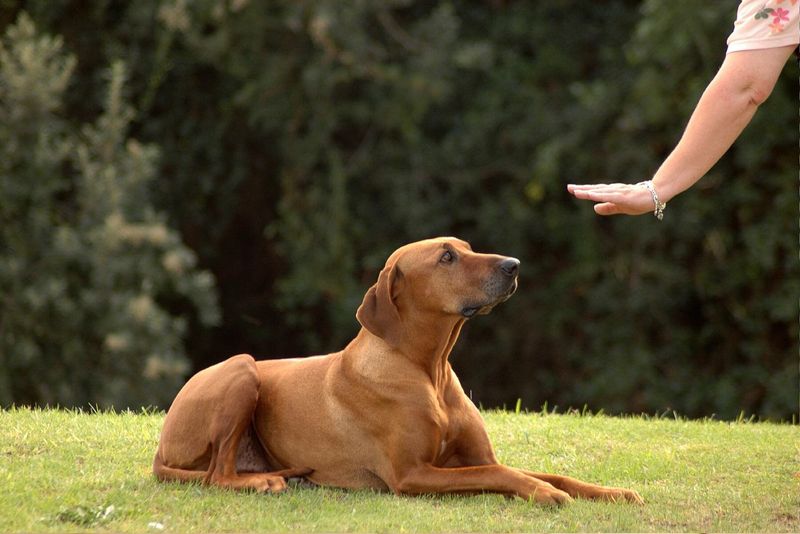
Imagine having the power to freeze your dog in time, ensuring they remain safe and sound. That’s precisely what the “Stay” command offers. This essential command can prevent your dog from darting into traffic, chasing the neighborhood cat, or interrupting your dinner party with enthusiastic leaps. It’s like giving your dog the pause button for life’s unpredictable moments.
Training “Stay” can be a slightly more challenging task than “Sit,” but with patience, you’ll soon see results. Begin by asking your dog to sit. Once they’ve mastered that, raise your hand as if you’re saying ‘stop’ and take a step back. If they hold their position, reward them generously. If not, gently guide them back and try again. Gradually increase the distance and duration as they become more confident.
This teaches your dog patience and trust, knowing you’ll return to them. Plus, it’s a handy tool for those Instagram-worthy photos where your dog looks like the epitome of discipline!
3. Come
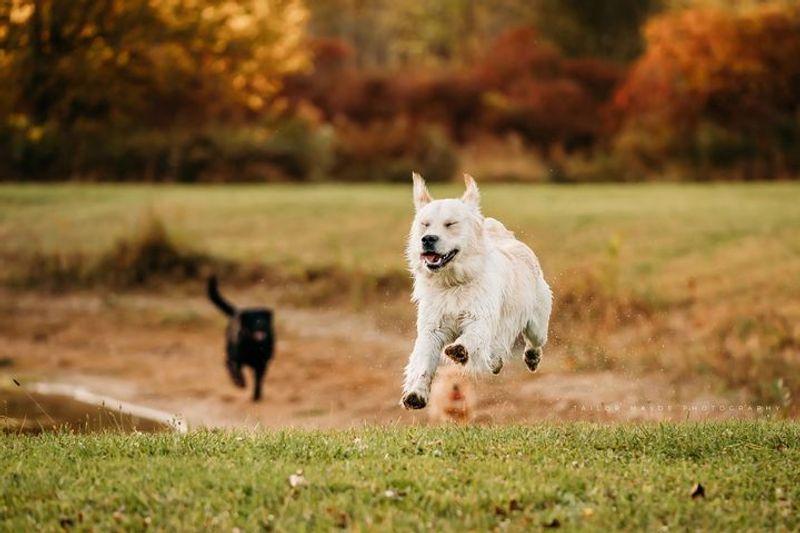
The “Come” command is your trusty superhero cape disguised as a simple word. In moments when your curious pup decides to go rogue, “Come” acts as the lifeline, bringing them back to safety. Whether they’re hot on the heels of a squirrel or heading towards a potential hazard, “Come” can be the command that saves the day!
Start teaching “Come” in distraction-free environments. Use a happy voice, call your dog’s name, and say “Come,” followed by lots of praise when they obey. Over time, introduce distractions, gradually increasing the command’s reliability in varied situations. Consistency and rewards are key!
“Come” isn’t just for emergencies; it’s a game-changer in everyday life. Whether you’re calling them for dinner or signaling the end of playtime, this command fosters trust and strengthens your bond.
Plus, having a responsive dog can earn you major bragging rights at the dog park. Just remember, teaching this command should always lead to positive experiences, ensuring your dog hurries back every time.
4. Down

Sometimes, getting a dog to lie down feels like asking a toddler to nap in the middle of a sugar rush. The “Down” command is a crucial step towards achieving that zen state in bustling environments. It’s not just about resting; it’s about creating a calm demeanor amidst chaos.
To teach “Down,” begin with your dog in a sitting position. Hold a treat close to their nose and slowly move it to the ground. As they follow the treat with their nose, their body should naturally follow. Once down, offer the treat and plenty of praise. Practice this regularly until your dog can “Down” on cue without the treat lure.
This command serves as a great reset button during high-energy moments. It can prevent unwanted jumping on guests or calm your dog during a vet visit. Plus, it’s a comfortable position for them when you’re busy or in public places where sitting might not be ideal. Essentially, this is your shortcut to peace and order in the doggie universe.
5. Leave it

“Leave it” is like having a magic spell that stops your dog from turning into a vacuum cleaner for all things gross and forbidden. Whether it’s a dropped snack, a stray sock, or something potentially harmful, this command keeps your dog’s curiosity in check.
Start teaching this command by placing a treat in both hands. Show one hand with the treat, and when your dog tries to grab it, close your fist and say “Leave it.” Once they stop trying, reward them with the treat from the other hand. Repeat until they associate “Leave it” with not touching the forbidden item.
Imagine your dog stumbling upon something hazardous on a walk. A well-practiced “Leave it” can prevent a potential mishap. Plus, it teaches impulse control, turning your dog into a well-mannered companion. The true magic lies in how it strengthens communication between you and your pet, making every walk a harmonious adventure.
6. Drop It
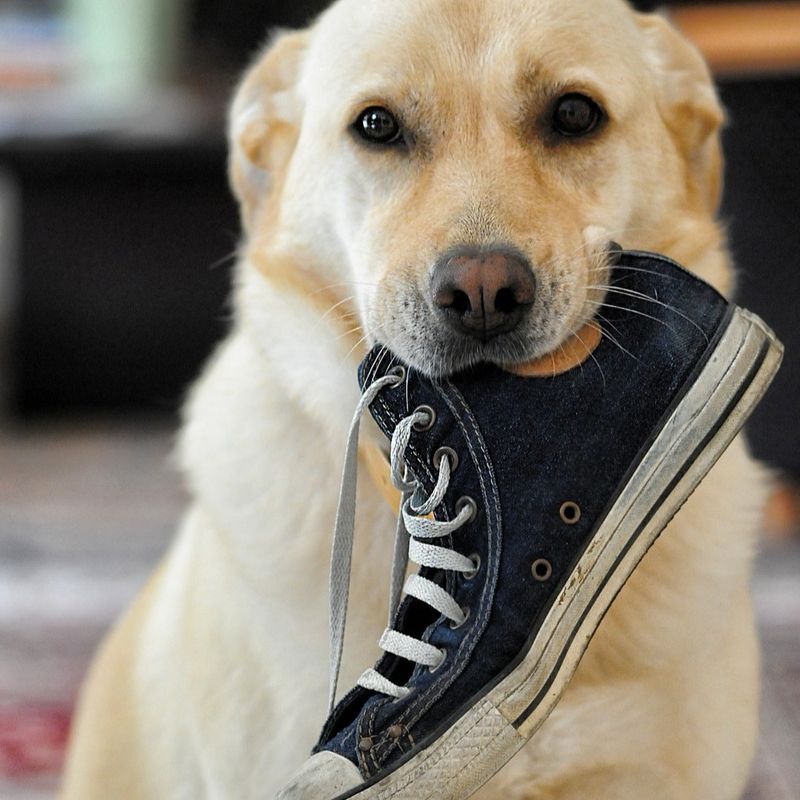
This command transforms your dog’s tendency to play tug-of-war with your favorite shoe into a harmonious game of fetch. Imagine calling “Drop it” and watching as your dog obediently releases whatever treasure they’ve snagged. It’s a command that prioritizes safety while adding a dash of entertainment.
Begin training “Drop it” by offering a toy your dog likes to hold. Once they grasp it, offer a treat and say “Drop it.” When they release the toy, reward them with the treat. Practice consistently to reinforce the behavior, ensuring they associate “Drop it” with positive outcomes.
This command is especially handy when your dog picks up something dangerous or unhygienic. It’s your go-to for preventing potential choking hazards or trips to the vet. Plus, it turns playtime into a cooperative experience rather than a tug-of-war battle. Consider it your secret weapon for a safe and playful environment.
7. Heel
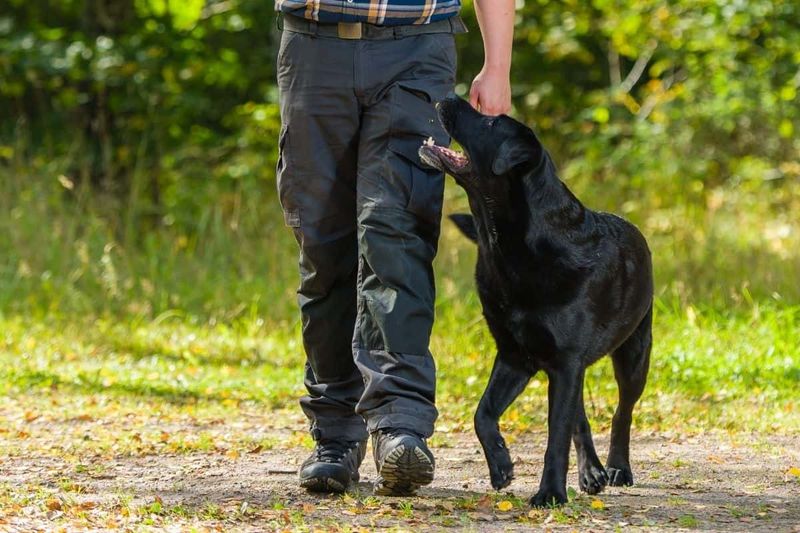
Walking a dog that drags you like they’re on a sled-pulling mission is exhausting. Enter the “Heel” command, your ticket to a peaceful stroll. This command ensures your pup walks beside you, turning daily walks into enjoyable outings rather than tug-of-war matches.
Begin teaching his command by holding treats in your left hand, keeping your dog on your left side. As you walk, use the command “Heel,” rewarding your dog when they stay by your side. Start with short distances, gradually increasing as they get the hang of it. Remember, patience and consistency are your best tools.
This command isn’t just about walking nicely; it’s about safety and control. It prevents your dog from lunging into traffic or approaching other dogs uninvited. Plus, a well-heeled dog can accompany you on errands or cafe stops, making them the perfect city companion.
With this, your walks become a synchronized dance of companionship and trust – an experience where both ends of the leash are in harmony.
8. Off
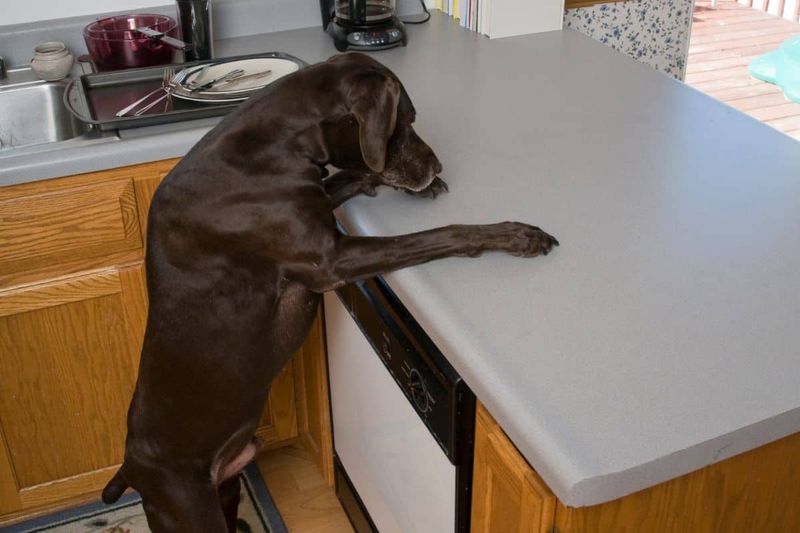
If you’ve ever been greeted by a furry missile the moment you walk through the door, “Off” is the command for you. It teaches your dog to keep all four paws on the ground, preventing uninvited couch invasions or table surfing sprees.
To train “Off,” wait for your dog to jump onto a forbidden surface. Gently guide them down while saying “Off,” and reward with praise once all paws are on the ground. Consistency is crucial; practice regularly to reinforce the lesson.
This command is about more than just manners; it’s about creating boundaries. It saves your furniture and ensures guests aren’t tackled upon arrival. This command transforms chaos into calm, making your home a pet-friendly zone without the antics. It’s like teaching your dog to respect personal space while still showering you with love and affection.
9. Quiet
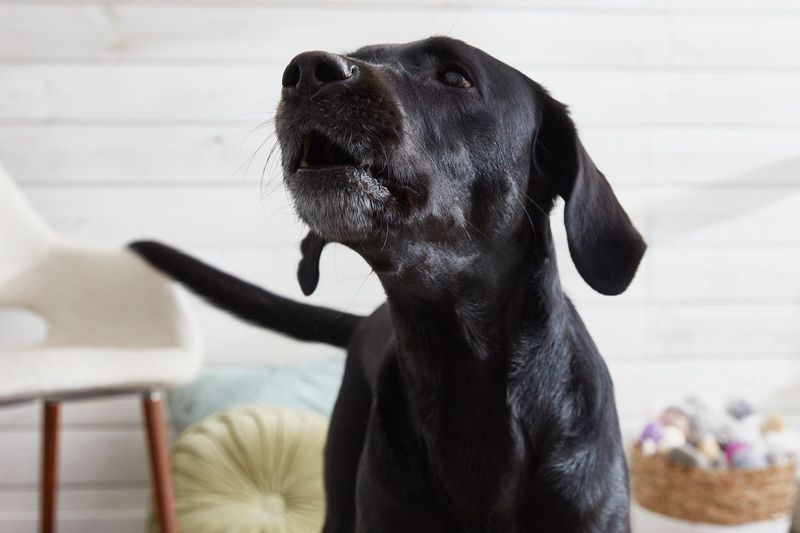
For those moments when your dog channels their inner alarm system, the “Quiet” command is a blessing. It helps curb excessive barking, whether they’re responding to the mailman’s arrival or a mysterious noise from the backyard.
Begin teaching this by allowing your dog to bark a few times. Say “Quiet” in a calm but firm voice. When they stop, reward them with treats and praise. Consistency will help them associate silence with positive reinforcement
This reduces noise pollution, ensuring peaceful evenings at home and courteous neighbors. Plus, it strengthens your bond by enhancing communication. Remember, a well-timed “Quiet” transforms chaos into calm, making your dog a well-mannered member of the household.
10. Place
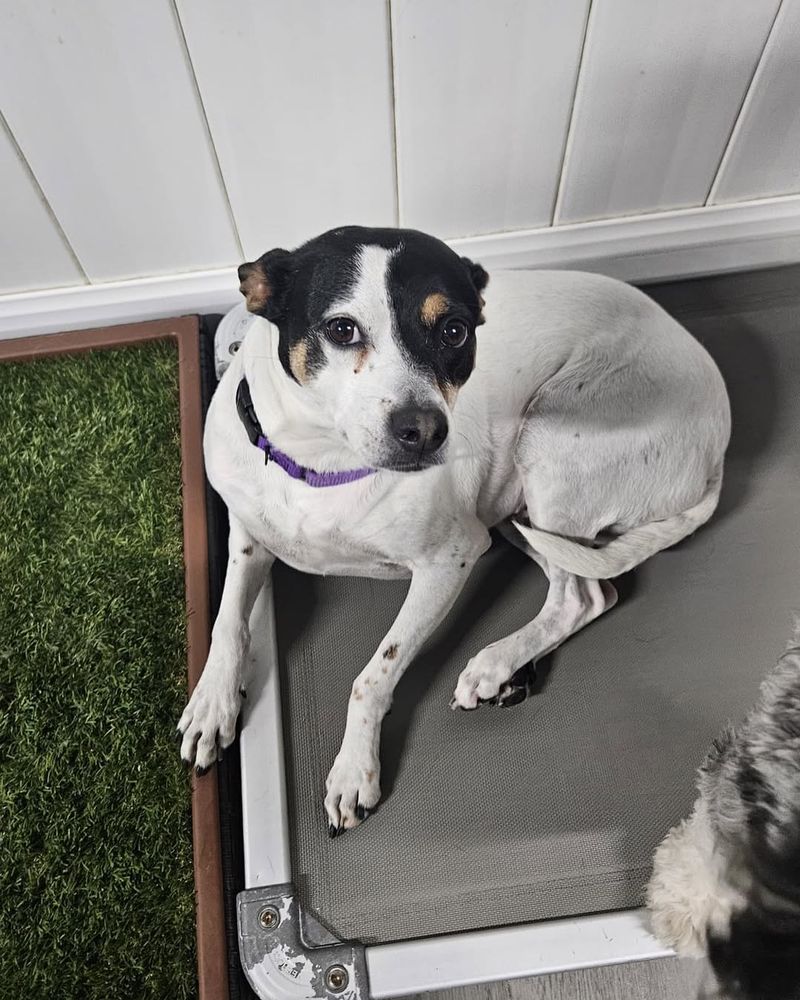
Imagine telling your dog to go to their place and watching as they trot off to their designated spot, like a seasoned actor heading to their mark. This command is your ticket to a peaceful home environment, where your dog knows exactly where they should be during mealtime or when guests arrive.
To teach “Place,” start by leading your dog to a specific spot, like a bed or mat. Use the command “Place” and reward them for staying put. Gradually increase the time and distance, ensuring they understand the command even when distractions are present. Consistency is key in reinforcing this behavior.
This command is more than just a novelty; it’s about creating safe zones for your dog. It provides them with a familiar and secure spot amidst household hustle and bustle.
This also prevents unwanted behaviors like begging at the table or crowding the door when visitors arrive. It’s like giving your dog a personal retreat within the home, ensuring peace and order in every corner.
11. Touch
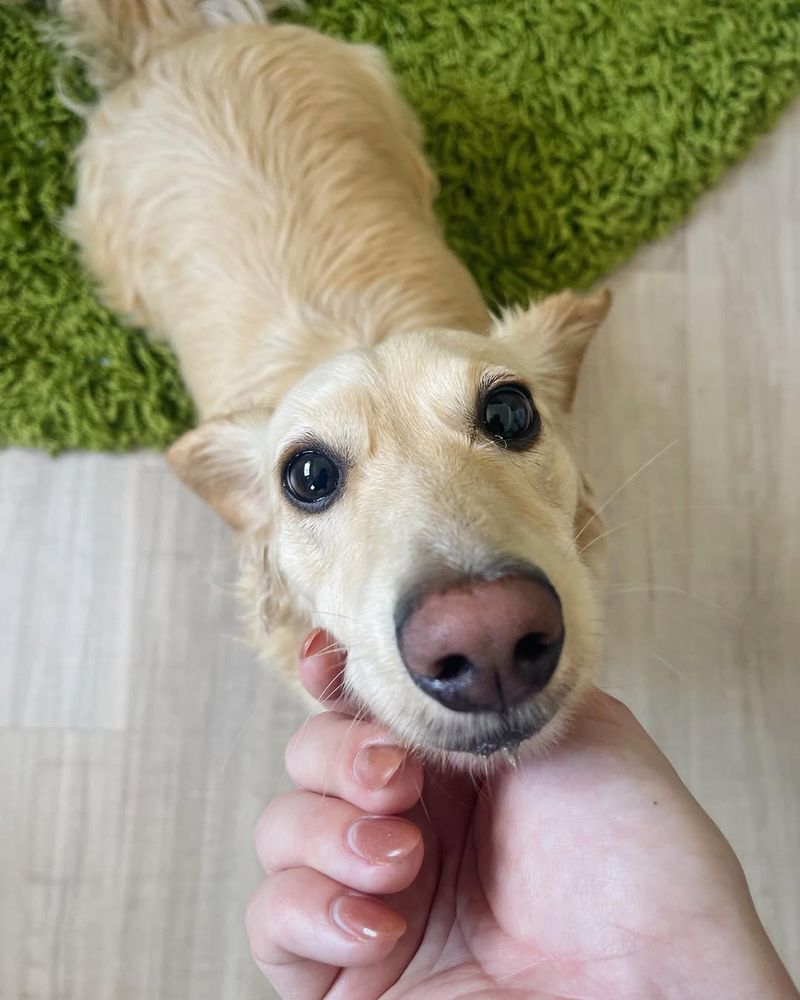
This command might seem simple, but it opens doors to a world of advanced training possibilities. It’s essentially teaching your dog to touch their nose to a target, often your hand, which can be used for a variety of practical purposes.
To train “Touch,” hold out your hand near your dog’s nose. As they show interest, say “Touch” and reward them when their nose meets your hand. Practice this in different settings to solidify the behavior, gradually increasing the complexity of the task.
This can be used to redirect attention, assist in leash training, or even as a building block for agility courses. It enhances communication and strengthens the trust between you and your dog. Plus, it’s a fun and interactive way to keep their mind engaged.
With “Touch,” you’re not just teaching a command; you’re building a bridge of understanding and cooperation.






